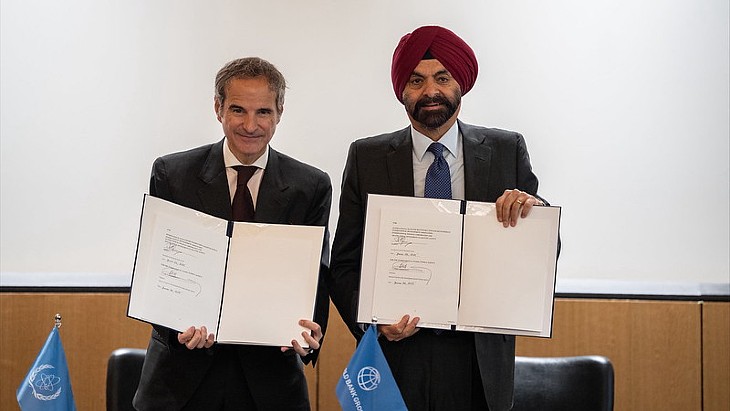Molten salt irradiation test completed at Petten
.jpg)
The Nuclear Research and Consultancy Group (NRG) said it is the first irradiation of its kind since the research carried out in the USA in the 1960s. "Irradiation tests of this kind form a crucial step in the development of molten salt reactor technology," it said.
MSRs use fuel dissolved in a molten fluoride or chloride salt. As MSR fuel salt is a liquid, it functions as both the fuel (producing the heat) and the coolant (transporting the heat away and ultimately to the power plant). This means that such reactors could not suffer from a loss of cooling leading to a meltdown.
The SALIENT-01 test is the first irradiation experiment conducted by NRG in the MSR research programme that started in 2015. Research under this programme is partly funded by the Ministry of Economic Affairs. The research is being carried out in collaboration with the Joint Research Centre (JRC) of the European Commission in Karlsruhe, Germany.
JRC has developed fuel comprising lithium and thorium fluoride salts. NRG started an irradiation in the High Flux Reactor of samples of this fuel in August 2017.
"Completing our work inside the reactor means we can now examine the irradiated salt more closely in the NRG labs," said Ralph Hania, a researcher at NRG. "This means we'll really be able to see how the salt responds to irradiation in the reactor."
NRG's MSR programme now includes research into appropriate construction materials, processing and purification of molten salt, and processing residual products.
Further irradiation tests are planned, including one later this year to investigate radiolysis of salts. This process may occur when nuclear fuel salts cool down to near room temperature while in a radiation field and results in the production of gases.
Another irradiation experiment in the High Flux Reactor is planned to start in early 2020 which will examine corrosion resistance of candidate alloys for construction of an MSR.
The basic technology of MSRs is not new - it was first demonstrated at Oak Ridge National Laboratory, where a 7.4 MWt test reactor, the Molten Salt Reactor Experiment, operated from 1965 to 1969.
Much of the interest today in reviving the MSR concept relates to using thorium (to breed fissile uranium-233), where an initial source of fissile material such as plutonium-239 needs to be provided. There are a number of different MSR design concepts, and a number of interesting challenges in the commercialisation of many, especially with thorium.
In February this year, NRG signed a contract with Terrestrial Energy to carry out testing of materials, including graphite, for key components of its Integral Molten Salt Reactor (IMSR). The agreement will see NRG provide expert technical services to support Terrestrial Energy's "in-core" materials testing and the development of its generation IV plant.
In March 2018, Terrestrial Energy signed a technical services agreement with JRC to perform confirmatory studies of the fuel and primary coolant salt mixture for the IMSR.
_92619.jpg)


_84504.jpg)





..._58412.jpg)

